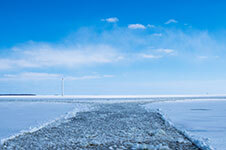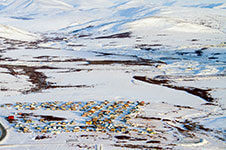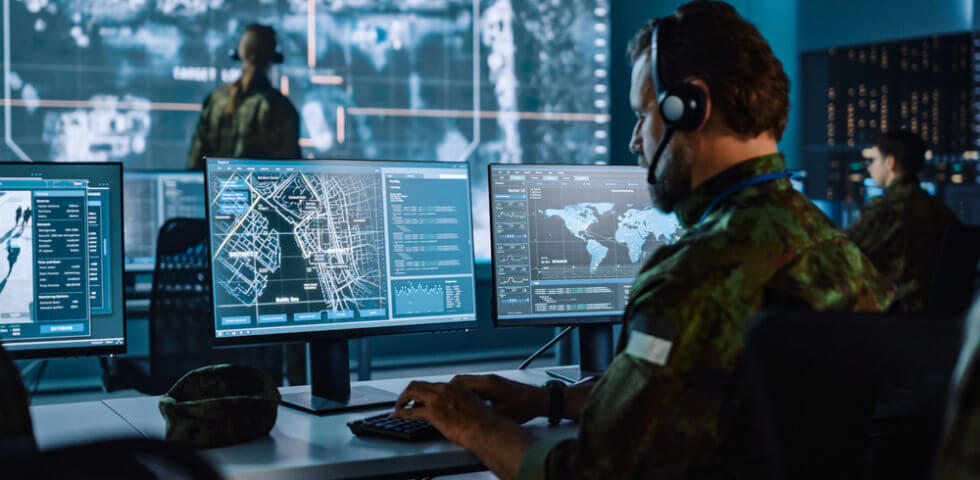Subsea cables are the foundation of today’s internet, with over 95% of international data and voice transfers being routed through subsea fiber optic cables. Cables run along the ocean floor are also essential within the US, making it possible for Alaska, Hawaii, and US territories to connect with states in the lower 48. And with the push for 5G networks, which require data to be carried over short distances faster, there will be an even higher need for extensive subsea cable systems.
The growth of fiber optics brings great promise for America and the rest of the world. The speed and reliability of this technology is making its way to areas previously disconnected from a fiber optic cable system. In Northern Alaska, the Quintillion Network has connected thousands of Alaskans and transfers more than 60 TB of data daily across the Arctic, the US, internationally, and even space. It is the first and only subsea and terrestrial fiber optic system in the North American Arctic and connects to existing networks in Anchorage, Seattle, and Portland.
Fiber optic internet is used at every level. It provides households with broadband access to stream movies, play online games, or work remotely. Military, governments, first responders, schools, large corporations, and small local businesses use fiber. And with every person, business, or institution that uses fiber optic internet, there is a huge amount of sensitive, and sometimes critical, data that is being transferred over cables.
As we look to a future powered by fiber optics, subsea cable security needs to be a priority. There are several threats to subsea cables that can cause delays in internet connection, or compromise critical data, which can cause major breaches in national security. Decreasing vulnerability is essential.
Physical Vulnerabilities of Subsea Cables
Many of the risks to submarine cables are physical. This infrastructure can become damaged, potentially causing lapses in service. From a national security standpoint, poor internet service is a major threat. A robust, resilient system is necessary for a range of national security issues, from defense measures and military operations to economic advancement and cybersecurity.
Anchors and Trawlers: The Biggest Threats to Subsea Cables
The biggest threats to subsea cables security are fishing and shipping activities, which make up approximately two-thirds of cable faults. And about 14% of faults are caused by natural events, such as current abrasion, ice scour, or earthquakes. Submarine cables can become damaged when fishing or merchant vessels drop anchors where cables are located or drag anchors across the seabed (which sometimes happen when traveling short distances). Trawling, a fishing method that captures sea animals near the ocean floor by towing a fishing net, can also disturb cables.
Methods to Decrease Vulnerability
Subsea cable security begins in the planning stage. First, there’s the actual cable itself. Submarine cable networks require a resilient design that provides conductivity, insulation, and armor. In ocean areas known for having strong waves and currents or seismic activity, a more robust design is needed.
Strategic planning for cable routes also limits vulnerability. Route diversity is a major part of this, which involves creating several landing stations which each have built-in redundancy. Subsea cable route designs should also consider seafloor topology and common fishing routes. Generally, cables laid in deeper waters are less likely to be disturbed from anchors and trawlers, and burying cables deep under the ground can further prevent damage.
In the event that a cable is disrupted, a fast, 24/7 monitoring system allows fiber optic companies to respond quickly. An early detection plan is critical for ensuring faults don’t go unnoticed and avoiding major outages. Fiber optic infrastructure is extensive and includes many parts. Monitoring systems can often detect issues with subsea cables themselves or report problems with cable landing stations.
International Attacks and Subsea Cable Security
While accidental damage is the main cause of issues with subsea cables, it is also possible for cables to be purposely damaged or tapped into. If an American adversary were to severe a cable, this could have several serious national security consequences. This could halt essential governmental or economical activities, sabotage military communication, or completely cut off populations from internet access.
Russian activity near subsea cables has gained the attention of NATO and the American government, as Russian submarines and surface vessels have the potential to damage submarine infrastructure.
A more likely, and perhaps more dangerous, national security threat is other countries tapping into subsea cables and stealing data through cable backdoors, onshore landing stations, or potentially the cables themselves. Russian spy ships in the North Atlantic and Chinese competition in the subsea cable industry both present risk for cyberattack. Another possibility is adversaries hacking into network management systems and gaining administrative rights, disrupting data traffic, and recording or destroy sensitive data.
The Quintillion Network: A Resilient Subsea Cable System in the Alaska Arctic
The Alaska Arctic is a region that is especially vulnerable and valuable to American adversaries. The landscape of the Arctic is changing rapidly, which has opened physical gaps in landscape and underscored digital gaps. The Quintillion Network helps support Arctic security by providing a means for reliable communication in the North American Arctic and enabling the American government to modernize its North Warning System.
To support these national security measures and help local Alaskans access fast, reliable broadband, the Quintillion network features a resilient design which includes:
- A three-pair system with a 30 Tbps capacity (scalable up to 90 Tbps)
- Subsea cables buried up to 12 feet below the ocean floor
- Six cable landings installed in steel conduits up to a mile offshore
- Redundant equipment at each landing site with battery and standby generator backup power systems
- A 24/7 monitoring system, including vessel activity tracking nearby the cable route, to increase disruption response time.
This system is entirely US-owned and is designated “critical infrastructure,” as it is the only subsea fiber optic cable network in the US Arctic. This infrastructure does not contain any non-compliant foreign components, and Quintillion works with the US Department of Homeland Security, the Department of Justice, and the Department of Defense.
The location of the Quintillion Network further protects cables from cyber threat. A remote location in the Arctic makes subsea cables and landing stations nearly impossible to access, and the system is buried beneath the ground, preventing radio frequency interception. The cables are designed to withstand Arctic conditions and are strategically routed to prevent damage.
In addition, our HiLDA ground station is the highest latitude data acquisition US ground station, allowing US-based satellite companies to downlink data from polar orbiting satellites to a US location instead of a foreign one. It is located in Utqiaġvik, Alaska at 72 degrees latitude and operates with a 3.7-meter antenna. The ground station connects via fiber to the Equinix SE2 International Business Exchange data center.
While the Alaska community is at the heart of what Quintillion does, national security is an essential part of the service we provide. We’ve considered subsea cable security from the beginning, and we’ve delivered a robust, reliable system that can withstand common threats and provide unrivaled speed, security, and capacity.
The Quintillion Network is expanding. Contact us to learn what’s next.















